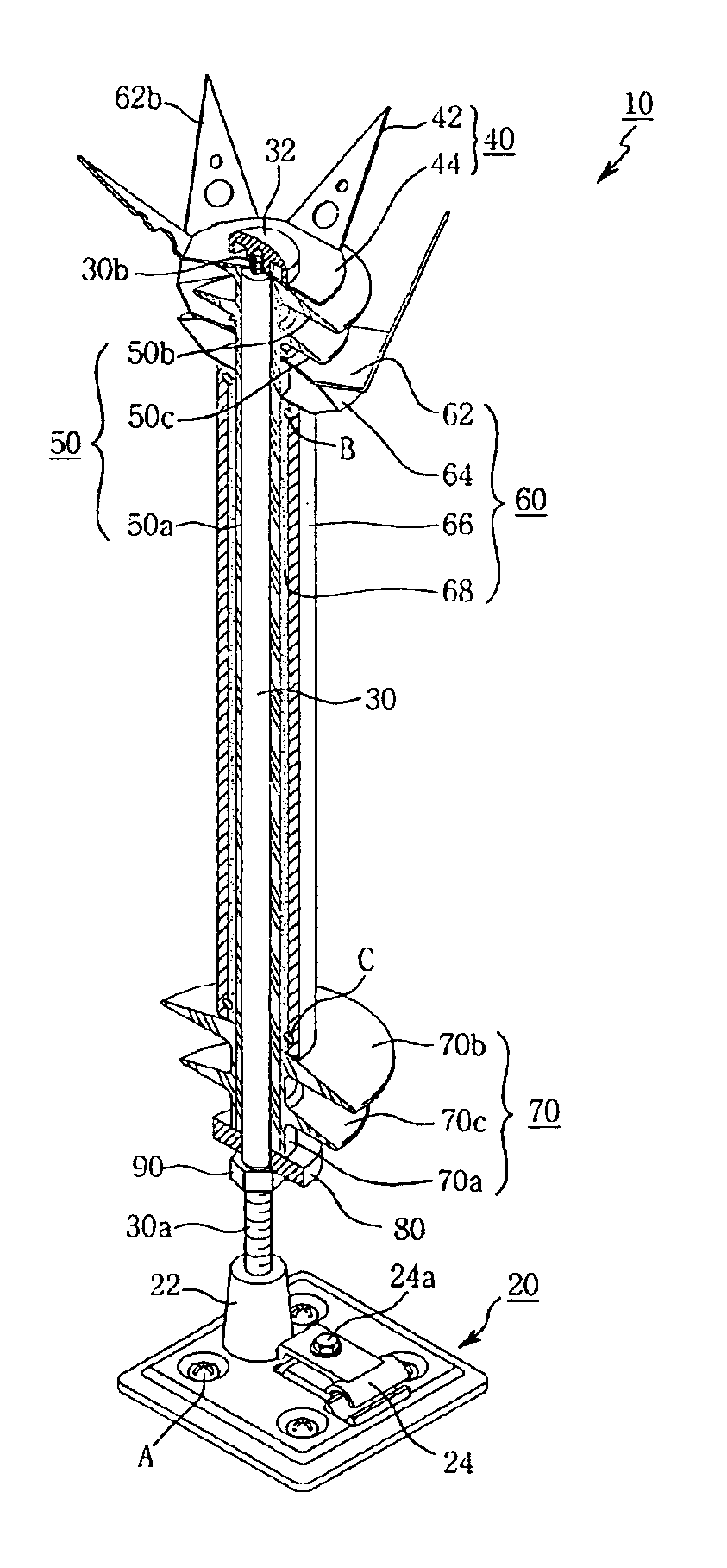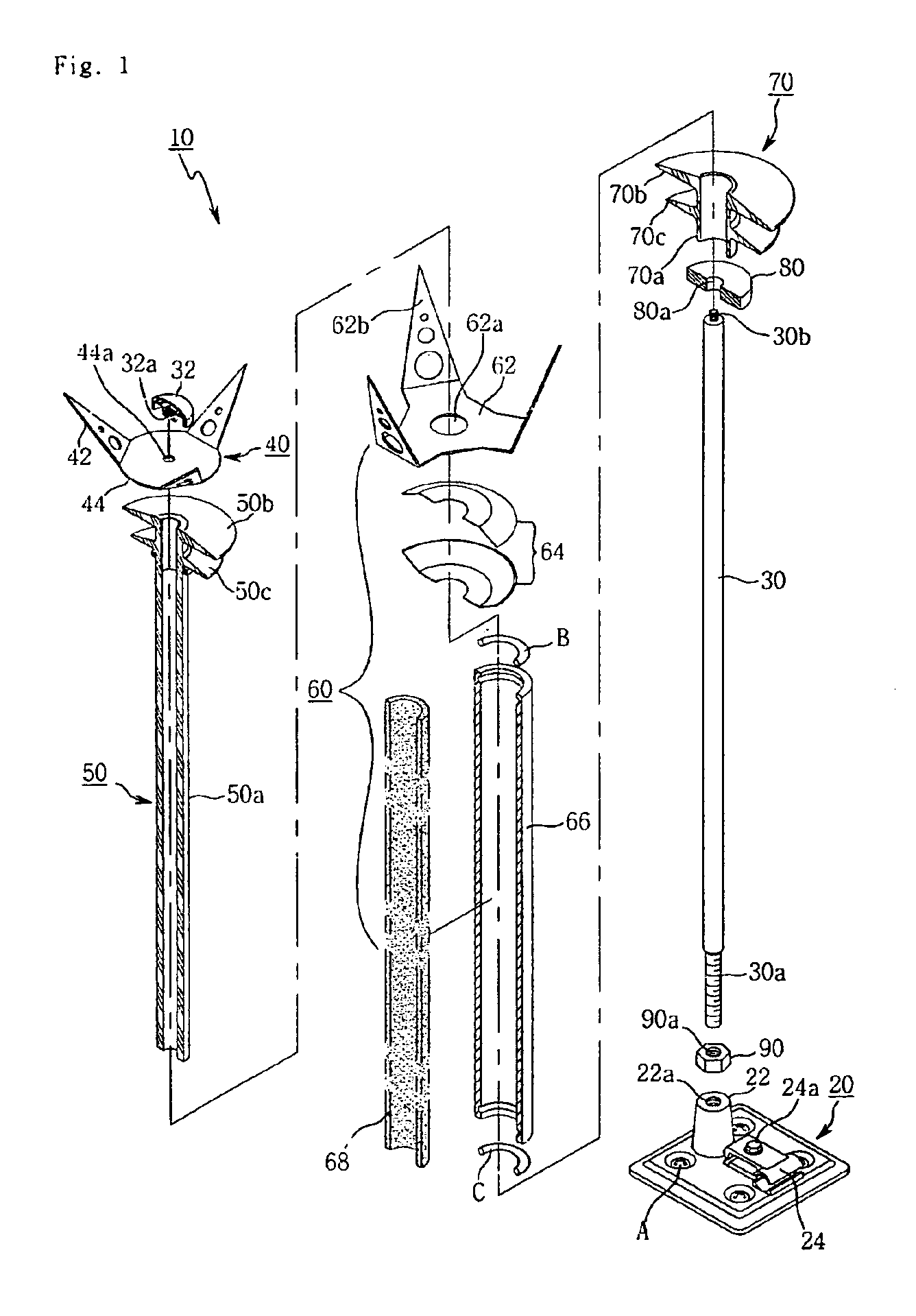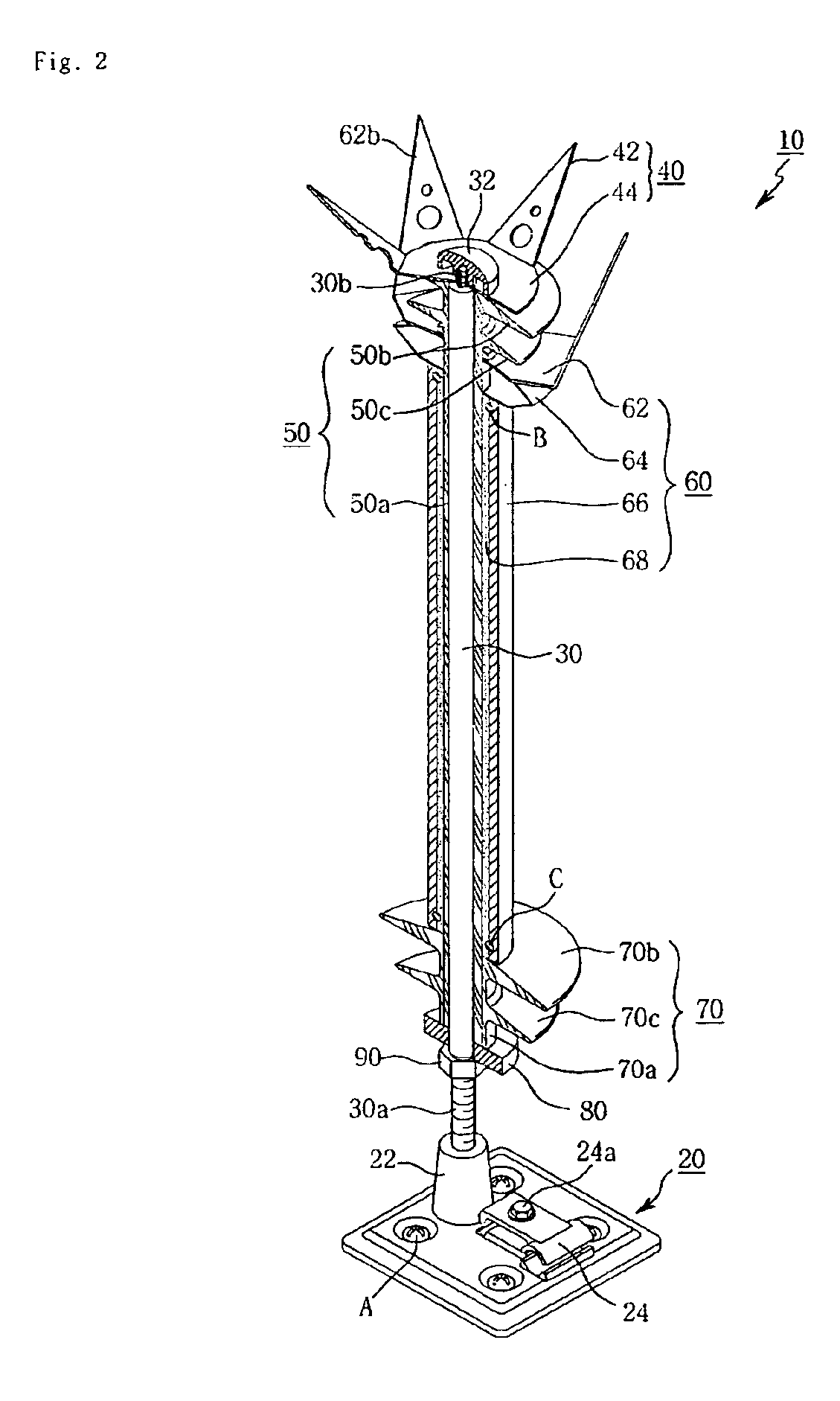Lightning arrester
a technology of arrester and light, which is applied in the installation of lighting conductors, connection to earth, relays, etc., can solve the problems of lowering the charge filling efficiency, difficult discharge, and inefficient formation of earth electric fields induced by thunderclouds at the uppermost part of buildings
- Summary
- Abstract
- Description
- Claims
- Application Information
AI Technical Summary
Benefits of technology
Problems solved by technology
Method used
Image
Examples
Embodiment Construction
Hereinafter, a preferred embodiment of the present invention will be described with reference to the accompanying drawings. In the following description and drawings, the same reference numerals are used to designate the same or similar components, and so repetition of the description on the same or similar components will be omitted.
FIG. 1 is a partially sectional exploded perspective view of a lightning arrester 10 according to a first embodiment of the present invention, and FIG. 2 is a partially sectional perspective view of the lightning arrester 10 shown in FIG. 1.
As shown in FIGS. 1 and 2, the lightning arrester 10 of the present invention includes a fixing base 20 fixed to an uppermost part of an object to be protected through fixing screws A, a fixing bar 30 vertically installed on an upper surface of the fixing base 20, a main electrode section 40 made of conductive material and making contact with an upper portion of the fixing bar 30, an upper polymer insulator 50 having...
PUM
 Login to View More
Login to View More Abstract
Description
Claims
Application Information
 Login to View More
Login to View More - R&D
- Intellectual Property
- Life Sciences
- Materials
- Tech Scout
- Unparalleled Data Quality
- Higher Quality Content
- 60% Fewer Hallucinations
Browse by: Latest US Patents, China's latest patents, Technical Efficacy Thesaurus, Application Domain, Technology Topic, Popular Technical Reports.
© 2025 PatSnap. All rights reserved.Legal|Privacy policy|Modern Slavery Act Transparency Statement|Sitemap|About US| Contact US: help@patsnap.com



